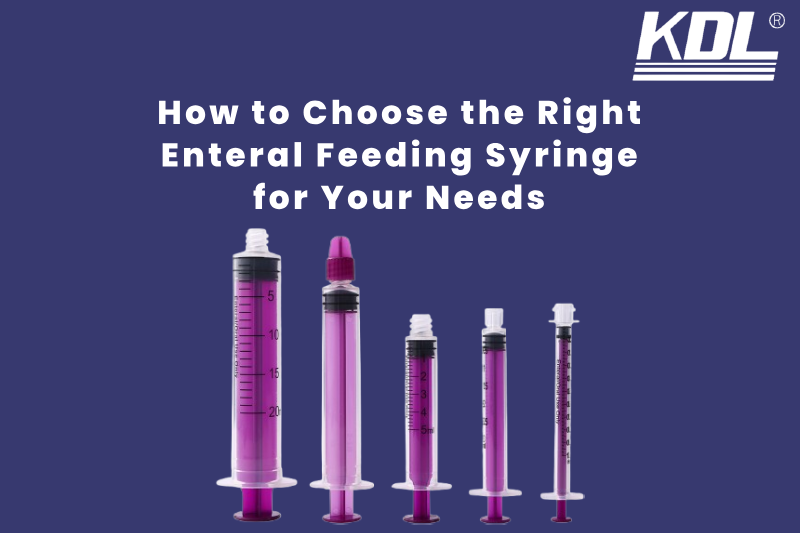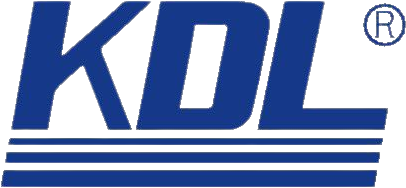
Managing enteral nutrition can feel overwhelming, but finding the right tools makes all the difference. One essential tool is the enteral feeding syringes, which plays a crucial role in ensuring safe and effective feeding. This guide will walk you through the process of enteral feeding syringe selection, helping you make an informed decision that aligns with your specific needs. With the right syringe, you can simplify the feeding process and ensure optimal patient care.
What is an enteral feeding syringe?
An enteral feeding syringe is a medical device that helps deliver liquid nutrients, medications, or fluids directly into a patient’s digestive system through a feeding tube. Manufacturers specifically design these syringes to function with feeding tubes and prevent accidental intravenous use. It offers a safe and effective way to meet nutritional needs for people who can’t eat or swallow normally.
If you’re wondering how to choose enteral feeding syringes that suit your needs, this guide will clarify everything from types and key features to common mistakes to avoid. For reliable options, explore KDL enteral feeding syringe designed to support safe and effective feeding. Whether you’re a caregiver, a healthcare professional, or a family member supporting a loved one, this comprehensive overview will give you the knowledge you need. From feeding tube syringe selection to understanding materials, we’ll cover it all in an easy-to-follow format.
Understanding Different Types of Enteral Feeding Syringes
There are several types of enteral feeding syringes designed to meet different needs. Understanding these options can help you identify the best enteral feeding syringe for your situation:
- Single-Use Syringes:
These are sterile syringes designed for one-time use to prevent cross-contamination. They’re ideal for hospital settings and situations requiring strict hygiene. - Reusable Syringes:
Made from durable materials, these syringes can be washed and sterilized for repeated use. They’re eco-friendly and cost-effective, making them a great choice for long-term home care. - Gravity Feeding Syringes:
These are used in gravity feeding systems, where nutrition flows naturally through the tube without additional pressure. They’re simple and effective for steady feeding processes. - Bolus Feeding Syringes:
Designed for quick feeding, these syringes allow caregivers to manually push nutrition or medication through the feeding tube. They’re particularly useful in emergency or time-sensitive situations. - Extension Syringes:
These feature longer tips or tubing extensions, offering flexibility and ease when accessing feeding tubes in hard-to-reach areas. They provide greater convenience for caregivers managing patients in various positions.
Choosing the right type depends on your feeding routine, the patient’s condition, and the level of convenience you’re seeking. Exploring these types ensures you find an option tailored to your circumstances.
What Factors Should You Consider When Choosing an Enteral Feeding Syringe?
When selecting an enteral feeding syringe, focus on these essential factors to ensure optimal performance and comfort:
Size and Capacity
Choose a syringe size that aligns with your feeding volume. Syringes typically range from 5 mL to 100 mL. For smaller medication doses, a smaller syringe ensures accuracy. For large-volume feeds, a higher capacity syringe reduces the need for multiple refills. This saves time and minimizes interruptions during feeding.
Material and Design
Look for syringes made of durable, BPA-free materials. Transparent designs allow you to monitor the flow of liquids, while color-coded syringes enhance usability. Additionally, curved or ergonomic designs improve grip and ease of handling. High-quality materials ensure the syringe maintains its integrity over multiple uses.
Ease of Use
User-friendly features, such as smooth plunger action and clearly marked measurements, make feeding easier and reduce the risk of errors. Reusable syringes should be easy to clean and assemble, while single-use syringes should be designed for quick and efficient application. This enhances both caregiver efficiency and patient comfort.
Compatibility with Feeding Tubes
Ensure the syringe’s tip design matches your feeding tube connection. Enteral syringes often feature ENFit® connectors, a standardized system that enhances safety by preventing accidental connections to non-enteral systems. This compatibility is crucial for avoiding leaks or interruptions during feeding sessions. Check out high-quality feeding syringes from KDL, designed for compatibility and safety with ENFit® connectors.
By focusing on these features, you’ll find an enteral nutrition syringe guide that simplifies your feeding routine while prioritizing safety. A well-chosen syringe can transform a challenging process into a manageable one.
How to Assess Your Specific Needs
Choosing the right feeding syringe depends on evaluating your unique requirements. Here are some factors to consider:
- Feeding Frequency: If you’re administering multiple feeds daily, opt for durable and reusable syringes. They offer long-term cost savings and environmental benefits.
- Patient Mobility: Patients with limited mobility may benefit from syringes with ergonomic designs for easier handling. Flexible options like extension syringes can also make feeding more accessible.
- Hygiene Requirements: For patients with compromised immunity, single-use syringes ensure the highest level of cleanliness. Prioritizing hygiene can significantly reduce the risk of infections.
- Type of Feeding Tube: Check if the syringe is compatible with the feeding tube’s connectors to avoid leaks or malfunctions. A mismatch can disrupt the feeding process and cause unnecessary stress.
Personalizing your selection ensures caregiver convenience and patient comfort. Browse enteral nutrition syringes from KDL to find a solution tailored to your needs.
Common Mistakes to Avoid When Selecting an Enteral Feeding Syringe
Mistakes during feeding syringe selection can cause unnecessary complications. Here are some common errors to avoid:
- Overlooking Compatibility: Using a syringe with incompatible connectors can lead to leaks or improper feeding, disrupting the process.
- Choosing the Wrong Size: A syringe that’s too small or too large may disrupt the feeding process or lead to dosing inaccuracies. Accurate sizing is crucial for efficiency.
- Ignoring Safety Features: Avoid syringes that lack safety connectors or are made from non-medical-grade materials. Safety should never be compromised.
- Neglecting Hygiene: Reusing single-use syringes or failing to clean reusable ones thoroughly can result in infections. Proper cleaning protocols are essential for patient safety.
- Not Considering Patient Needs: Selecting a syringe without considering ease of use or patient comfort may lead to frustration or discomfort. Always prioritize patient well-being.
Avoiding these pitfalls ensures a smooth and stress-free feeding experience. A well-informed choice can prevent unnecessary complications and enhance overall care quality.
Conclusion
Finding the right enteral feeding syringe is about balancing functionality, safety, and comfort. By understanding your options and focusing on essential features like size, material, and compatibility, you can confidently select the best syringe for your needs. Whether it’s single-use or reusable, the right choice can make all the difference in caregiving.
If you’re looking for reliable options, explore KDL’s range of high-quality enteral feeding syringes. Designed with user convenience and patient safety in mind, our products support seamless feeding experiences. Visit kdlnc.com today to learn more and find the perfect solution for your enteral nutrition needs. With the right syringe, you can simplify care and improve the quality of life for your loved ones or patients.
 +86-791-8686-1216
+86-791-8686-1216 

